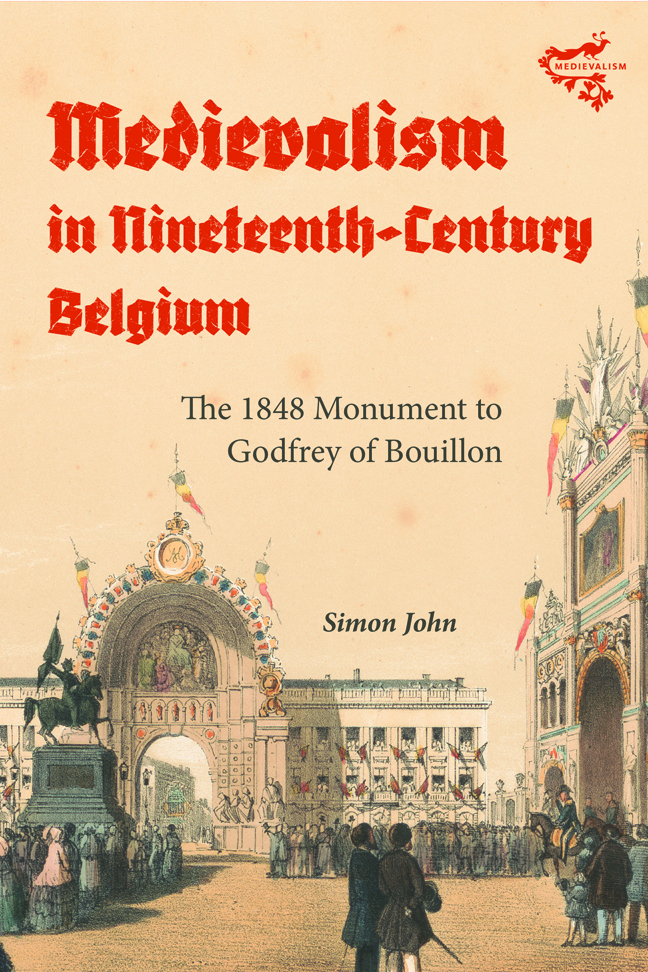Book contents
- Frontmatter
- Contents
- List of Illustrations
- Acknowledgments
- A note on language and names
- List of Abbreviations
- Preface
- Introduction
- 1 State-building, historical culture and public monuments in nineteenth-century Belgium
- 2 The physical setting of the monument: Brussels’ Place Royale
- 3 The creation of the monument
- 4 The changing meanings of the monument
- 5 The monument as a lieu de mémoire I: culture and politics
- 6 The monument as a lieu de mémoire II: history and national identity
- Conclusion
- Bibliography
- Index
- Medievalism
2 - The physical setting of the monument: Brussels’ Place Royale
Published online by Cambridge University Press: 09 January 2024
- Frontmatter
- Contents
- List of Illustrations
- Acknowledgments
- A note on language and names
- List of Abbreviations
- Preface
- Introduction
- 1 State-building, historical culture and public monuments in nineteenth-century Belgium
- 2 The physical setting of the monument: Brussels’ Place Royale
- 3 The creation of the monument
- 4 The changing meanings of the monument
- 5 The monument as a lieu de mémoire I: culture and politics
- 6 The monument as a lieu de mémoire II: history and national identity
- Conclusion
- Bibliography
- Index
- Medievalism
Summary
It is in one of the most beautiful squares of the kingdom [of Belgium] that the equestrian statue of the hero who most exemplifies the world of warriors stands.
Adolphe Siret on the location of the monument to Godfrey of Bouillon, Brussels’ Place Royale, in December 1848.
As Brussels’ monument to Godfrey of Bouillon both draws meaning from and imbues meaning into its physical surroundings, it is vital to appraise the fabric of the Place Royale and the nearby parts of the Belgian capital. The following pages firstly trace the history of the site now occupied by the Place Royale from the Middle Ages down to the eighteenth century, when it was dominated by the Coudenberg Palace. Under the dukes of Brabant (and subsequently the dynasties that held the title), the palace evolved during that time into a magnificent residence, before being ruined in a great fire in 1731. The chapter then examines the renovation of the site through the clearing of the Coudenberg's ruins and the construction of the Place Royale in the late eighteenth century. It appraises the square's neoclassical aesthetic and layout, as well as the surrounding buildings and thoroughfares. Inspired by squares constructed in ancien régime France in honour of its monarchy, Brussels’ Place Royale was conceived as a tribute to the authority of the Habsburg monarchy in the Netherlands. The most powerful symbol of that authority was the first monument installed in the square: a statue of the Habsburg governor of the southern Netherlands, Charles Alexander of Lotharingia, which was unveiled in 1775 and destroyed by French revolutionary forces twenty years later.
Crucially, the Place Royale was the setting of key events during the Belgian Revolution, namely, the fighting between the revolutionaries and Dutch forces in September 1830 and the inauguration of Leopold I as king of the Belgians on 21 July 1831. Even before the monument to Godfrey of Bouillon was installed in the Brussels’ Place Royale in 1848, then, the square had already become a powerful lieu de mémoire of Belgian history in its own right. The square's neoclassical layout and aesthetic were designed to focus attention on the monument at its centre, with the monument and the surrounding buildings functioning as a combined architectural ensemble.
- Type
- Chapter
- Information
- Medievalism in Nineteenth-Century BelgiumThe 1848 Monument to Godfrey of Bouillon, pp. 43 - 64Publisher: Boydell & BrewerPrint publication year: 2023



